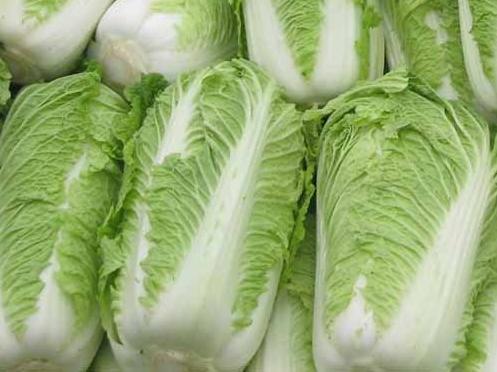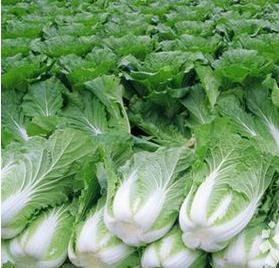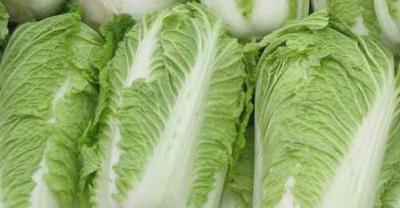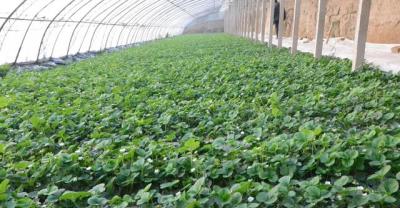Management knowledge after planting Chinese cabbage in autumn!
As the saying goes, "a hundred dishes are not as good as cabbages". Traditional Chinese medicine believes that cabbage is slightly cold and non-toxic, and it has the effects of nourishing stomach, nourishing stomach, relieving thirst, diuresis, clearing heat and detoxification.

Nutritional value of Chinese cabbage
1. Moistening the intestines and detoxification. Cabbage is rich in crude fiber, which can not only play a role in moistening the intestines, but also promote detoxification, stimulate gastrointestinal peristalsis, and improve people with poor digestion. Often eat some cabbage, can also play a good role in preventing bowel cancer.
2. Prevention of breast cancer. Cabbage contains trace elements that help break down androgens associated with breast cancer. Hormone researchers in New York also show that eating cabbage often can prevent the occurrence of breast cancer.
3. It can supplement calcium. Chinese cabbage is rich in calcium, containing milligrams of calcium per gram. A cup of cooked cabbage juice can provide almost as much calcium as a glass of milk. Some people don't like drinking milk and can get a lot of calcium by eating enough Chinese cabbage.
The sowing time of Chinese cabbage in autumn is generally 3-5 days before and after the Beginning of Autumn, and the management of unearthed Chinese cabbage is more important.

I. Seedling management
Refers to the management from the unearthed seedlings to the rosette stage, when the time seedlings should be 2-3 or 4-5 true leaves, each seedling once, and get rid of weeds, diseased seedlings and weak seedlings.
II. Pest management
1. Yellow striped jumping beetle: it often occurs before and after the heart is broken in the seedling stage, the cotyledons are eaten, the whole plant dies, and the larvae only damage the vegetable roots and wither the leaves. Foliar spraying or root irrigation with 1500 times of fipronil or 1000 times of 90% trichlorfon or 1000 times of phoxim EC.
2. Vegetable borer: it has the property of drilling borer, which brings difficulties to control. The heart leaves and leaves of the seedling stage were damaged, and the growth point of the seedlings was destroyed and stopped growing or died, but the young larvae were damaged in the leaves and heart leaves, and the occurrence period was more orderly, which could be controlled during the initial hatching period of the larvae and before heart decay. Fenvalerate 3000 times or Bt emulsion 50 grams of water 40 kg or 48% Lesben EC 2500 times (30 grams per mu) were sprayed continuously for 3 times. Be careful to spray the medicine into the heart of the cabbage.
3. Pieris rapae (Pieris rapae): the 1st-2nd instar larvae eat the mesophyll, more than the 3rd instar can bite the leaves into holes and lacerations, and in severe cases, only petioles and veins remain. The larvae discharge a large amount of feces, polluting the leaves and the heart of cabbage, and their wounds can easily lead to soft rot. Spray with bacterial insecticide Bt EC or cyanobacteria liquid, or spray 1000 times with 50% phoxim EC or Luheng Wenjing 2000-2500 solution evenly.
4. Aphids: aphids are often concentrated on vegetable leaves and tender stems, sucking sap from the plant, causing serious water loss and malnutrition. In addition to harming the plant, it also spreads a variety of viruses, which must be treated early. 6000 times of 20% carbendazim or 10% imidacloprid, 10 grams of water and 50 kg of water per mu, or Luheng Wenjing 2000-2500 solution can be sprayed evenly.
Third, fertilizer and water management.

1. Topdressing. Seedling stage is generally not topdressing, if the bottom fertilizer is insufficient, can be in 3-4 true leaf stage, ammonium sulfate 10 kg per mu, sprinkled on both sides of the seedling, and immediately watered, called "seedling fertilizer". In the middle of heading, 15-20 kg of ammonium sulfate per mu can be applied with panicle water, which is called "heart-filling fertilizer".
2 watering. Chinese cabbage from Tuanzhu to rosette stage, the temperature is dropping day by day, the weather is mild, can be properly watered during this period. After entering the heading stage, Chinese cabbage needs the most water, so it is necessary to water the squatting seedlings once. Then water it a second time every 2-3 days. After that, water is usually watered once every 5-6 days to keep the soil moist.
- Prev

Popular science: strawberry seed planting technology
There are many steps in the body of this article, and beginners will be deterred from reading it, but after careful operation, they will find that it is actually very simple, just using a text table.
- Next

Map of powdery mildew of cucumber planted in rural areas
Whether it is large base agricultural planting or small household planting, cucumber powdery mildew is a disease often encountered in our rural planting, how to prescribe the right medicine to the case, please.
Related
- Fuxing push coffee new agricultural production and marketing class: lack of small-scale processing plants
- Jujube rice field leisure farm deep ploughing Yilan for five years to create a space for organic food and play
- Nongyu Farm-A trial of organic papaya for brave women with advanced technology
- Four points for attention in the prevention and control of diseases and insect pests of edible fungi
- How to add nutrient solution to Edible Fungi
- Is there any good way to control edible fungus mites?
- Open Inoculation Technology of Edible Fungi
- Is there any clever way to use fertilizer for edible fungus in winter?
- What agents are used to kill the pathogens of edible fungi in the mushroom shed?
- Rapid drying of Edible Fungi

